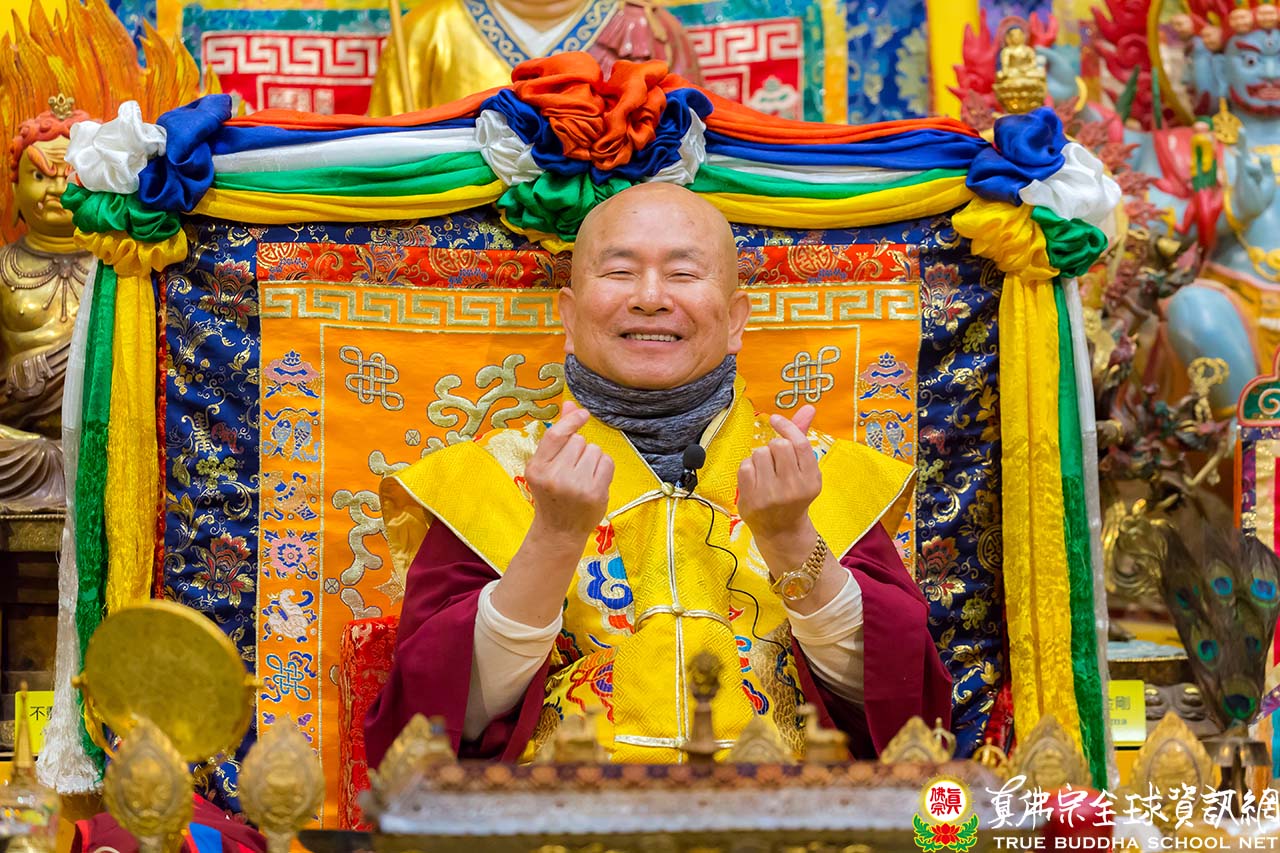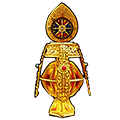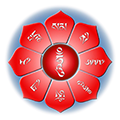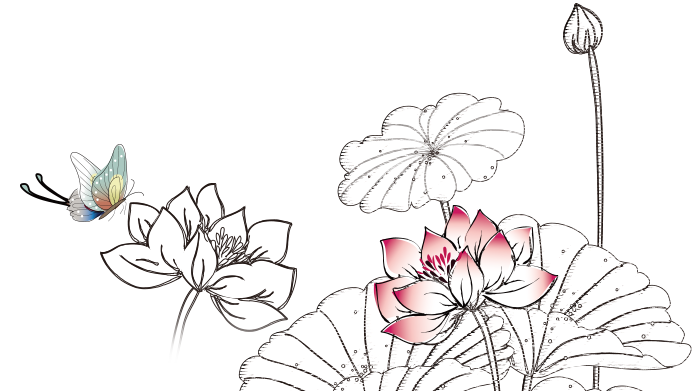
Vajracchedika Prajnaparamita Sutra
Vajra Sutra (Diamond Sutra)
Detailed Exposition by Living Buddha Lian-Sheng, Grandmaster Sheng-Yen Lu
Translated into English by True Buddha School Vajra Sutra Translation Team
Discourse 36, 27 November 2021 - Chapter Thirteen—Upholding According to the Dharma (continued)
Thirteen—Upholding According to the Dharma
At this time, Subhuti asked the Buddha, “World-honored One, how should we name this sutra? How shall we uphold it?”
The Buddha told Subhuti, “This sutra shall be called Vajracchedika Prajnaparamita. You shall uphold this name. Why? Subhuti, the prajnaparamita as spoken by the Buddha is not prajnaparamita; it is called prajnaparamita. Subhuti, what do you think? Does the Tathagata speak on the dharma?”
Subhuti replied, “World-honored One, the Tathagata has not spoken.”
“Subhuti, what do you think? Is there an infinite amount of dust particles in the three-thousand-great-thousand worlds?”
Subhuti replied, “Countless, World-honored One.
“Subhuti, the Tathagata said, that dust is not dust; it is [merely] named dust. The Tathagata also said, that the world is not [a] world; it is [merely] called the world.
“Subhuti, what do you think? Can one see the Tathagata through the thirty-two marks of perfection of a buddha?”
“No, World-honored One! One cannot see the Tathagata through the thirty-two marks of perfection. Why? Because the Tathagata said that the thirty-two marks of perfection [phenomena] are non-phenomena; they are [merely] called the thirty-two marks of perfection [phenomena].”
“Subhuti, should there be good men and good women as many as the grains of sand of the Ganges River who forsake their bodies and lives as an act of giving, [compared to] a person who accepts and upholds this sutra, even if it is only the four-line verse, the latter will have greater blessings.”
How do you explain the statement the Tathagata has not spoken on anything? Let me put it this way. In the so-called dharma teaching, there is no dharma to be spoken. Because there is no dharma teaching, it is the [real] dharma teaching. Let me express it this way, the so-called dharma teaching has no dharma to be spoken of. Because there is no dharma to be spoken, that is speaking on the dharma.
Let me infer even further so you can understand. I like using the moon as an analogy. If you go to the moon, you won’t find humans there. Is anyone speaking the dharma on the moon? No. Is anyone listening to the dharma? No. So, any dharma on the moon? No. All of these [notions] are meaningless on the moon. So everything is annihilated on the moon! Does time have any use on the moon? No. Time is only used by humans in the human world.
What about the spatial dimension? Grandmaster once talked about space. I own a piece of land on earth, thus I’m its landlord. But say you have a piece of land on the moon and you are its landlord. Yet, is that land of any use to you? No! Is it valuable? No! The land is in the spatial dimension of the moon. But is it of any use? No. Space on the moon is of no use to you! Time on the moon is of no use either. Nobody can use that [moon] time. [In other words] there is no time on the moon.
Let me tell you another thing, which will be referred to later. Our current saha world will be ruined. It will become dust in a hundred and twenty thousand years. The whole earth also goes through creation, existence, deterioration and annihilation. In the end, the earth will be gone too! At such time, where is the buddhadharma? Who is speaking the dharma? Who is listening to the dharma? Is there buddhadharma then?
Once we reach the state of emptiness—when the earth is annihilated, when human beings and everything are all gone—as such, who is speaking the dharma? Who is listening to the dharma? And where is the buddhadharma then? Assume the annihilation stage. From the creation stage, to the existence stage, then the deterioration stage... The present is considered the deterioration stage…
A new virus is appearing in Africa. What is it called? Nobody knows what the virus really is. It is a new variant of the coronavirus and is even more viral! It is mutating such that no vaccine is effective. Say perhaps that the human race is entirely infected and die, there will no longer be any humans on earth.
Let me ask you, in such case, who is speaking the dharma? Who is listening to the dharma? Is there buddhadharma? We can relate to this. A super virus appears, not just the one in Africa. As soon as you hear the name of the virus, you will be infected and confirmed positive. [laughter] The virus kills right then and there; all humans are gone. Let me ask you, who will be speaking on the dharma then? Who is listening to the dharma? What is buddhadharma? You should be able to deduce [themeaning of the statement] from this analogy.
Did you know the Buddha says that everything is impermanent? It is one of the Three Dharma Seals! What are the dharma seals, you ask? They are the ultimate truths as spoken by the Buddha. Everything is impermanent; everything has no-self; and extinction in nirvana.[2]The last one is the nirvana. The buddhadharma is meant to teach you to transform yourself to become empty and have no self. You’d use this emptiness to confirm the emptiness of the universe. When both emptiness matches, that is nirvana.
This is also the dharmata—the intrinsic suchness of everything. Dharmata is nirvana. Actually, nirvana is your own emptiness. In the tantric tradition, the buddha says that you’d use the empty nature of your own body to confirm the empty nature of the universe and enter a kind of nirvana, the latter being the state of intrinsic suchness. As such, you are liberated from the rebirth cycle since you have destroyed it. The Vajra Sutra is the sutra that destroys the rebirth cycle, including the causes and effects. What is nirvana? When there are no causes for birth and no causes for death, it is called nirvana.
The buddhadharma is very deep and profound, so most people would not understand it. Religions typically only talk about heaven, hell and the human world. Hinduism talks about the union of Brahma and I. Brahma is heaven therefore, it is the union of the heaven and I. The highest realm in hinduism is the union with Brahma. Similarly, the Chinese talks on the union between the heavens and the humans.
But buddhism is different—it talks about the union of emptiness with emptiness, using your own empty nature to confirm the empty nature [of the universe], merging the two and entering the intrinsic suchness. You will not be reborn again. That is called nirvana. It is a very high realm. Yet, as spoken by Sakyamuni Buddha, there is also no such realm to be spoken of. Therefore, the Buddha said that the Tathagata did not speak on the dharma. Subhuti is the first and foremost in understanding empty nature and that is why he could say that the Tathagata did not speak on the dharma. That is what it means.
Today, you’ve heard it, and it certainly is very extraordinary. How does one break free from the rebirth cycle? When there is a cause, there is an effect. The only way to break free from the rebirth cycle is to transform yourself into the no-self. Because only when there is no self would you not engender any causes—there will be no causes at all. When there is no cause, there will be no effect. There will be no more causes and conditions, no more karma or affinities. There won’t be anything anymore. The rebirth cycle will be destroyed too, like in the Vajra Sutra. It will be gone, you will not be reborn anymore!
Thus, no self is one of the three dharma seals, as spoken by the Buddha. The three dharma seals are no self, impermanence [and nirvana].
Creation, existence, deterioration and emptiness. Our body also goes through the stages of creation, existence, deterioration and emptiness. Everything goes through these stages. In the Buddha’s eyes, everything is suffering! You’d want to leave behind suffering and attain happiness as soon as possible. All sentient beings suffer, since everything is impermanent. Impermanence is the root of all sufferings.
To reach spiritual attainments, you must first learn to be no-self. Once you are [in the state of]no-self, you’ll become a bodhisattva. Otherwise, by having a “self,” you are for yourself and you would create causes. Whether you can let go or not, it depends on whether you have self or not. Only if there is no self could you let go. If you still have a self, how can you possibly let go? It’s a very simple concept, right? Yet, sentient beings don’t understand…
So, what is “no self”? No self is [being a] bodhisattva, who exists always for the sake of other beings, never for oneself. They generate bodhicitta [the altruistic intent to liberate oneself and others]. This is an important point. I have explained it very clearly. Thus, Grandmaster prostrating to that disciple is not a big deal [referring to the earlier Q&A session]. Fundamentally, everything is equal [everybodyis equal too]. Everything is indeed equal. Jesus washed the feet of his disciples to show equality and humility. He also had no self. Only after you let go of the self could you become humble. If there is a self, there is no humility to be spoken of.
You must know how to enter nirvana, where you don’t have any cause for birth and you don’t have any cause for death. In other words, you will not be born, and you will not die. The intrinsic suchness of everything is nirvana. In that state, what dharma is there to be spoken of? None, there is no dharma to be spoken.
Everything is impermanent, everything has no self. Finally, in nirvana (intrinsic suchness) everything is extinct. You’re entering a state of complete extinction. There, there is no such thing as attainments. This is something most profound! It really is not easy to explain.
“Subhuti, what do you think? Does the Tathagata speak on the dharma?” Subhuti replied, “World-honored One, the Tathagata has not spoken.”
Like I said, there is no one speaking on the dharma, there is no one listening to the dharma, and there is no dharma. That’s how it is on the moon. One day, if there suddenly is a horrendous mutant virus that infects everybody and kills all of us, let me ask, who is there to speak the dharma? Who listens to the dharma? And is there buddhadharma?
That’s all for today. Om mani padme hum.
[1] To speak on the dharma is the same as to teach the dharma.
[2] Nirvana indicates total serenity and quiescence or extinction.
Next discourse on the Vajra Sutra: Discourse 37, 28 November 2021 - Chapter Thirteen—Upholding According to the Dharma (continued)
Previous discourse on the Vajra Sutra: Discourse 35, 21 November 2021 - Chapter Thirteen—Upholding According to the Dharma (continued)
Index of links to all discourse on the Vajra Sutra: https://en.tbsn.org/guidem/detail/2265/
Back to the main index page of all dharma discourse: https://en.tbsn.org/guidem/index
Full webcast of 2021.11.27 Ksitigarbha Group Practice (Ling Shen Ching Tze Temple, Redmond, USA) and dharma discourse with English interpretation: https://youtu.be/1oheDhnp-L4




